√100以上 intermittent exotropia treatment 156830-Intermittent alternating exotropia treatment
E controversies surrounding the disease classification and treatment options in the management of intermittent exotropia Recent findings Current studies are underway to uncover the natural history of the intermittent exotropia Patching and observation are reasonable treatment options in the first 6 months of the disease presentation As the disease progresses and nonsurgicalExotropia is a common type of strabismus that occurs when misaligned eyes deviate outward Exotropia (also known as walleye or divergent strabismus) differs from its opposite form, esotropia (eye turns in toward nose), in that exotropic eyes point outward or away from the nose Exotropia can occur in one or both eyesDownload PDF Surgical correction of intermittent exotropia is a breadandbutter procedure for many pediatric ophthalmologists But a recent study in the British Journal of Ophthalmology (BJO) 1 and an accompanying editorial 2 call into question the notion that intermittent exotropia is straightforward or fully understood These articles challenge some of the dogma that has guided
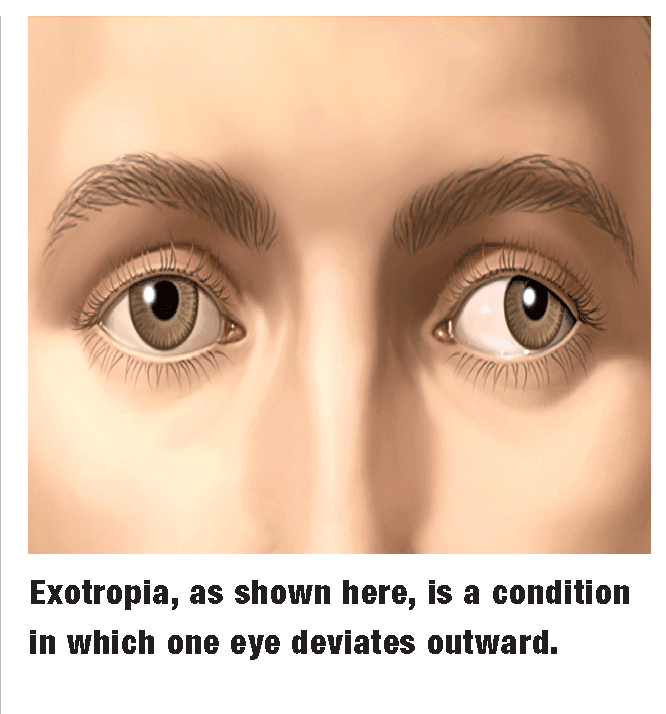
Do You See A Pattern
Intermittent alternating exotropia treatment
Intermittent alternating exotropia treatment-Treatment for exotropia depends on how often you have symptoms and on how severe they are Prism in your glasses may be prescribed to help with double vision Eye muscle surgery is also an option, especially if your exotropia isAlthough basic exotropia accounts for 50% of intermittent exotropias, there remain few studies showing the effectiveness of treating adults with childhood exotropia of the basic type Here, we describe the use of optometric vision therapy (VT) to treat adult exotropia Case 1




Do You See A Pattern
Treatment of Intermittent Exotropia of the Convergence Insufficiency Type with Bupivacaine 075% 5Year Experience and Outcomes At 5 years outcome, bupivicaine 075% offers a simple alternative therapy for CIXT type strabismus patientsIntermittent Exotropia The eye occasionally turns outwards Intermittent exotropia is more common, in fact, more patients have intermittent exotropia than constant exotropia Inability to maintain convergence and exophoria cause one of the eyes to turn outwards Patients can find the intermittent exotropia to be the most frustrating OftenOf intermittent exotropia Asadi et al evaluated the effect of a cocktail of orthoptic interventions including prism exercises, pencil pushups, 3D tests and dominant eye occlusion on intermittent exotropia in 74 patients and reported a success rate of 8% of patients in basic type, all patients in Convergence insufficiency type and 8% in
Some authors deny the role of orthoptic treatment 7, while others found it to be effective in certain types of intermittent exotropia 8, while still others considered that combined therapyIntermittent exotropia (X(T)) is one of the most common form of strabismus with surgery being the mainstay of treatment The main goal of surgery is to preserve binocular vision and stereopsis and to prevent its further loss The decision to operate is mainly based on four aspects increasing angle of exodeviation, deterioratingAn exotropia is an outward eye turn that can have a large variety of presentations It can be intermittent, constant, unilateral, alternating and vary in magnitude An exotropia has a variety of causes, some of which can be life threatening If an eyeturn is suspected or there is a family history of an eyeturn a comprehensive eyeexamination
Treatment of intermittent exotropia Treatment recommendations depends on the severity of the problem, on the signs and symptoms, and on the patient and family desires When the drifting eye movement is mild, observation may be all that is needed Sometimes, the condition will remain the same over a long period of time or may even get better Vision therapy (VT) is a commonly prescribed treatment for children with intermittent exotropia (IXT) The effectiveness of VT as a treatment modality for children with IXT is unknown because previous studies have largely limited observational or retrospective case series without comparison groups Intermittent exotropia (X(T)) is one of the most common form of strabismus with surgery being the mainstay of treatment The main goal of surgery is to preserve binocular vision and stereopsis and to prevent its further loss The decision to operate is mainly based on four aspects increasing angle of exodeviation, deteriorating control of X(T), decrease in stereopsis




Intermittent Divergent Squint In Prematurity And Its Neurophysiological Aspects Abstract Europe Pmc



2
Background The clinical management of intermittent exotropia has been discussed extensively in the literature, yet there remains a lack of clarity regarding indications for intervention, the most effective form of treatment and whether or not there is an optimal time in the evolution of the disease at which any treatment should be carried out Treatment of intermittent exotropia Intermittent exotropia should be treated immediately, as any misalignment indicates that the eyebrain connection is not working effectively The most successful treatment for strabismus is vision therapy, usually with other means such as eye patching, eyeglasses, and surgeryTreatment of Intermittent Exotropia Treatment options consist of Vision Therapy, patching, eyeglasses and/or, very rarely, surgery The most successful form of treatment is inoffice supervised Vision Therapy with home reinforcement Therapy changes the brain and is directed at the cause and cure of the problem




Intermittent Exotropia Ento Key
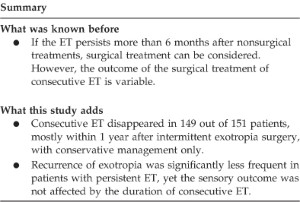



Results Of Conservative Management For Consecutive Esotropia After Intermittent Exotropia Surgery Eye
Exotropia treatment Treatment will vary depending on the severity of exotropia Some cases will have a relatively simple treatment plan, but others may require surgery Intermittent exotropia, which occurs occasionally, may only need to be monitored Nonsurgical exotropia treatment If exotropia is constant, an eye doctor may recommendIntroduction Intermittent exotropia is the most common form of exotropia and it is estimated that approximately 3% of Chinese teenagers suffer from this condition 1 The treatment of intermittent exotropia includes watchful observation, 2,3 patching, 2,3 prism, 4,5 overminus lens, 6 vision therapy 7–13 and surgery 14,15 Currently, there is no consensus regarding which treatment The second doctor you saw sounds like he has given the best advice Intermittent exotropia is not one uniform condition Each diagnosis is specific and the treatment depends on lots of factors If the eye drifts out for near, this can require earlier intervention, such as convergence exercises or surgery
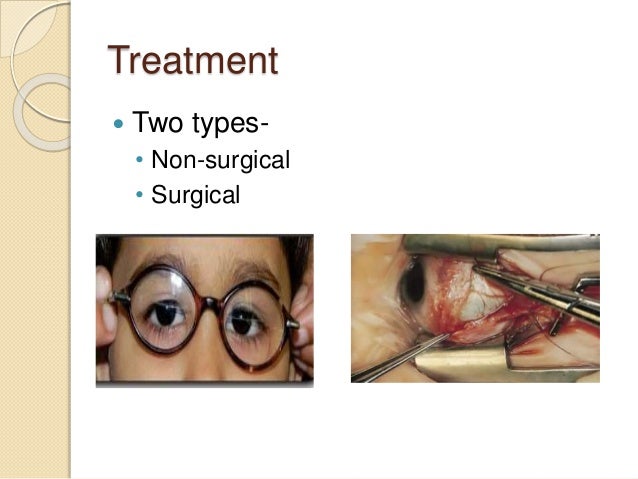



Intermittent Xt
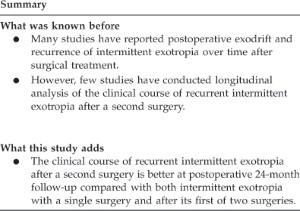



The Clinical Course Of Recurrent Intermittent Exotropia Following One Or Two Surgeries Over 24 Months Postoperatively Eye
Common sense approaches may help to control intermittent exotropia For example, getting the recommended amount of sleep for age is important—many children don't! T o study the longrange results of surgically treated intermittent exotropia, 100 consecutive patients have been followed up for an average of 61 years In all cases, the initial procedure was bilateral recession of the lateral rectus muscles The overall functional cure rate was 78% To accomplish this result, 27 patients were operated on a second time, 21 for7 rows Both groundin prisms and temporary stickon prisms have been described in the treatment of




Exotropia Outward Eye Turn




Jaypeedigital Ebook Reader
Small residual exotropia (15 to 18 prism diopters) – These patients can be managed with nonconservative measures Optical correction – A full correction should be given for any underlying myopic refraction Cycloplegics – Hypermetropes or emmetropes patients can be started on 1% cyclopentolate eyeClinical opinions regarding treatment of intermittent exotropia (IXT) vary widely and there is controversy as to which treatment modality is most successful This paper reviews the clinical literature related to five different treatment modalities used for IXT overminus lens therapy, prism therapy, occlusion therapy, extraocular muscle surgery Exodeviation is a horizontal form of strabismus characterized by visual axes that form a divergent angle The different types of acquired exotropia are intermittent exotropia, sensory exotropia, exotropia with neurologic causes and field defects, and consecutive exotropia




8 Intermittent Exotropia Ideas Strabismus Surgery Vision Therapy Eye Surgery




Exotropia Pediatric Ophthalmic Consultants
Intermittent Extropia with minus lenses CS/ST/DP/0419/v10 – review 0122 DGH/PIL/029 Page 2 Treatment options are No treatment indicated when the squint is rarely seen Minus lenses when the squint is seen more than 50 per cent of the time, and is a less invasive option than squint surgeryMost intermittent alternating exotropias require optometric vision therapy, which incorporates the prescription of specific treatments in order to enhance fusional ranges, fusional stability, and vergence flexibility enhance accommodative/convergence relationships enhance near point of In another retrospective analysis by Figueira 43 that aimed to identify the best treatment option for intermittent exotropia, it was reported that surgery combined with preoperative orthoptic/occlusion therapy achieved the highest successful treatment rate at the 5 year followup (846%) when compared to surgery alone (25%) Success was defined
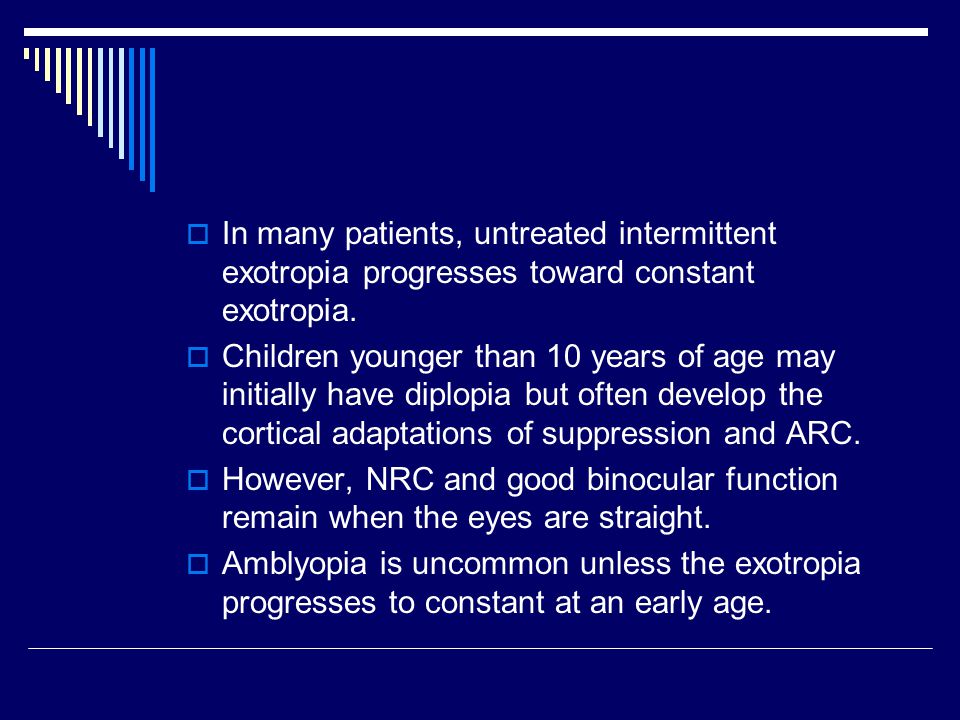



Exodeviations An Exodeviation Is A Divergent Strabismus That Can Be Latent Or Manifest Ppt Video Online Download
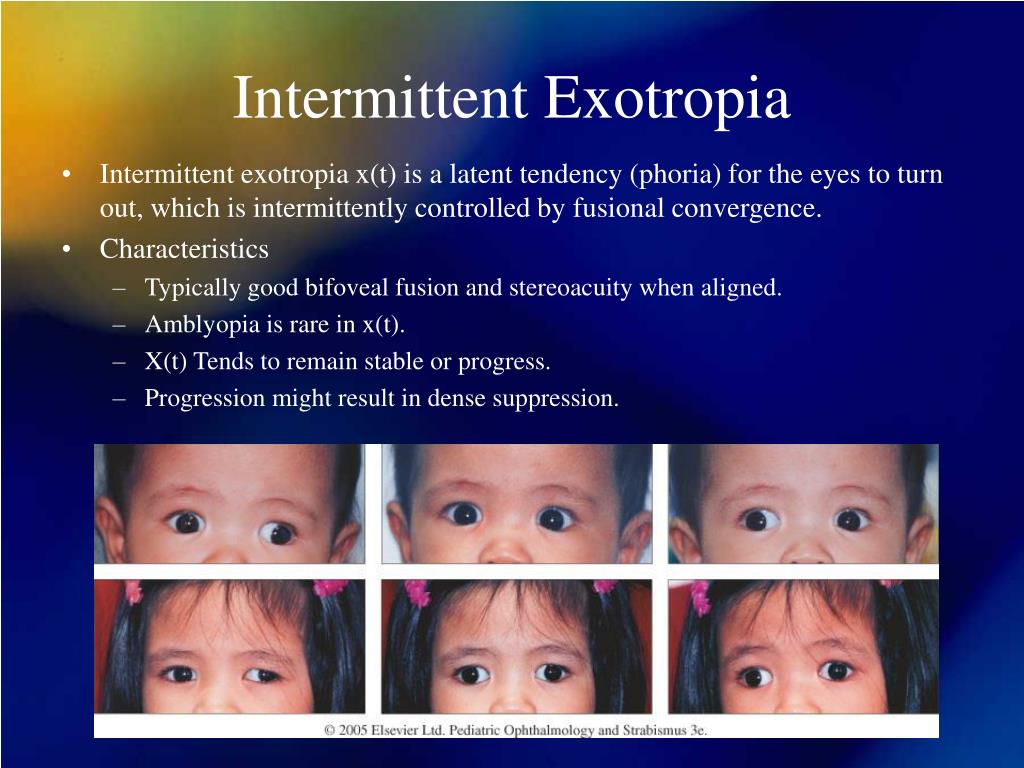



Ppt Surgical Outcomes In Intermittent Exotropia Powerpoint Presentation Id
Intermittent strabismus the exotropia occurs when the child is tired or daydreaming Patient may squint one eye Good stereopsis and binocular fusion when the eyes are aligned Treatment is usually strabismus surgery if the deviation is poorly controlled A phoria is a tendency for the eyes to drift apart, but alignment is maintained byTreatment is successful in approximately 90% of cases presenting for optometric vision therapy, according to welldocumented studies using rigorous criteria15 In the Viewpoints feature, following this article, two authorities on divergence excess/intermittent exotropia describe their treatment approaches DrBackground Intermittent exotropia (IXT) is the most common form of childhood exotropia 1, 2 with an incidence of 321 per 100,000 in children under 19 years of age 1 The strabismus is characterized by an exodeviation of one eye that is interspersed with periods of ocular alignment 3 Reliable measurement of the deviation is often hindered by the variable nature of the strabismus,




Non Surgical Management Options Of Intermittent Exotropia A Literature Review Heydarian S Hashemi H Jafarzadehpour E Ostadi A Yekta A Aghamirsalim M Dadbin N Ostadimoghaddam H Khoshhal F Khabazkhoob M J Curr




Exotropia Eyes Turn Outward Causes Symptoms Treatment Vision Center
Exotropia is a condition in which the eyes drift outward and away from each other during times of equal visual stimulation It tends to occur regularly Exotropia is Intermittent exotropia This is the most common form of exotropia It affects twice as many females as males Treatment may be advised if theTo evaluate mediumterm outcomes of overminus lens treatment in patients with intermittent exotropia X(T) A retrospective analysis was performed of the outcomes of 19 children with X(T) who were prescribed overminus lens (0 to 400 D) for a median period of 18 months (633) The success was



Editorial The Untapped Use Of Silicone Hydrogels




Treatment Of Recurrent Intermittent Exotropia Pdf Document
Tools for measurement of this control have recently been developed and are not commonly used The natural history of IXT is not well understood Treatment relies mainly on optical correction, binocular visual training therapy and surgery, but their indications are not well defined, nor are outcomes analysis criteriaReply to Letter to Editor Overminus lens therapy in the management of children with intermittent exotropia Kaveh Abri Aghdam, Amin Zand, Mostafa Soltan Sanjari, Shabnam Khorramdel, Reza Asadi Eye Research Center, The Five Senses Institute, Rassoul Akram Hospital, Iran University of Medical Sciences, Tehran, IranOPTOMETRIC CLINICAL PRACTICE GUIDELINE CARE OF THE PATIENT WITH STRABISMUS ESOTROPIA AND EXOTROPIA Reference Guide for Clinicians Prepared by the American Optometric Association Consensus Panel




Strabismus Amblyopia Leukocoria Saeed Alwadani Md Assistant Professor




Management Of Intermittent Exotropia Of The Divergence Excess Type A Teaching Case Report The Journal Of Optometric Education
Exotropia is a common form of strabismus characterized by an outward eye turn, away from the nose Exotropia is a eye turn where one eye points outwards, this may be noticed while the child is looking at distance objects, near objects or both Engaging patients (parents/families) in treatment decisions is increasingly recognised as important and beneficial Yet where the evidence base for treatment options is limited, as with intermittent distance exotropia (X(T)), this presents a challenge for families and clinicians The purpose of this study was to explore how decisions are made in the managementStaying as healthy as possible may also help Feeling sick or having a fever may cause the intermittent exotropia to temporarily occur more frequently
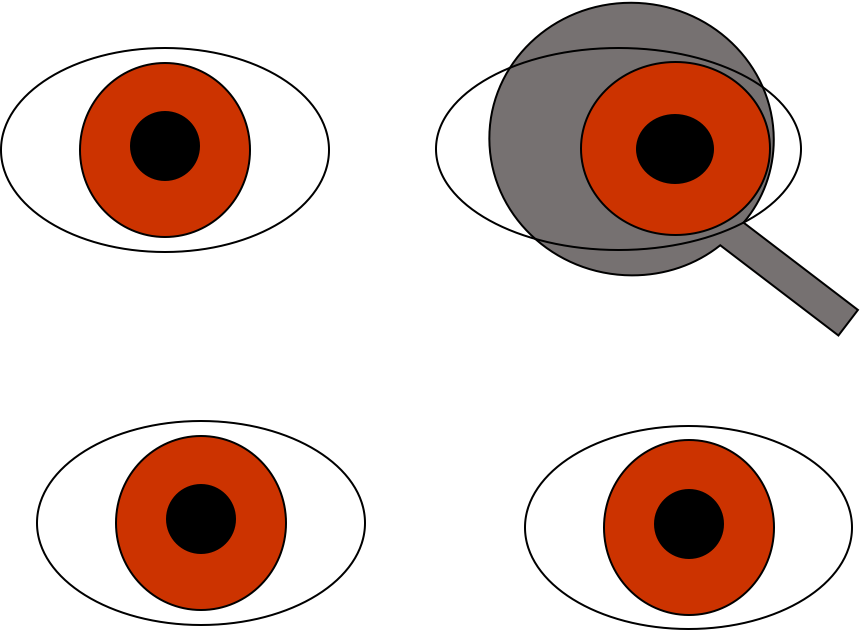



Intermittent Exotropia Simplified For The Postgraduates




Quantitative Measurement Of Passive Duction Force Tension In Intermittent Exotropia And Its Clinical Implications Springerlink
How is exotropia treated? Exotropia is a common condition It comprises 25% of all ocular misalignment cases in young childrenWhile it could happen periodically (eg, intermittent exotropia), it could also be constant However, it is more typical to find exotropia developed while a child is 1 to 4 years oldTreatment for esotropia and exotropia aims to ensure proper vision in both eyes and straighten the eyes Among the treatment options for esotropia are Glasses to correct vision problems such as nearsightedness, farsightedness or astigmatism Patching of the good eye, to improve vision in the lazy (amblyopic) eye




Constant Exotropia Management Youtube




Control Of Intermittent Exotropia Should Be Assessed With Control Of Intermittent Exotropia Should Be Assessed With
8 rows Although the nonsurgical treatment for intermittent exotropia is not very effective but it



Citeseerx Ist Psu Edu




Jaypeedigital Ebook Reader




Exotropia Types Symptoms Diagnosis Treatment Prevention



Surgical Outcomes Of Three Different Surgical Techniques For Treatment Of Convergence Insufficiency Intermittent Exotropia Eye




Treating Childhood Intermittent Distance Exotropia A Qualitative Study Of Decision Making Topic Of Research Paper In Clinical Medicine Download Scholarly Article Pdf And Read For Free On Cyberleninka Open Science Hub




Intermittent Exotropia Decompensated Youtube



The Ongoing Challenge Of Intermittent Exotropia American Academy Of Ophthalmology
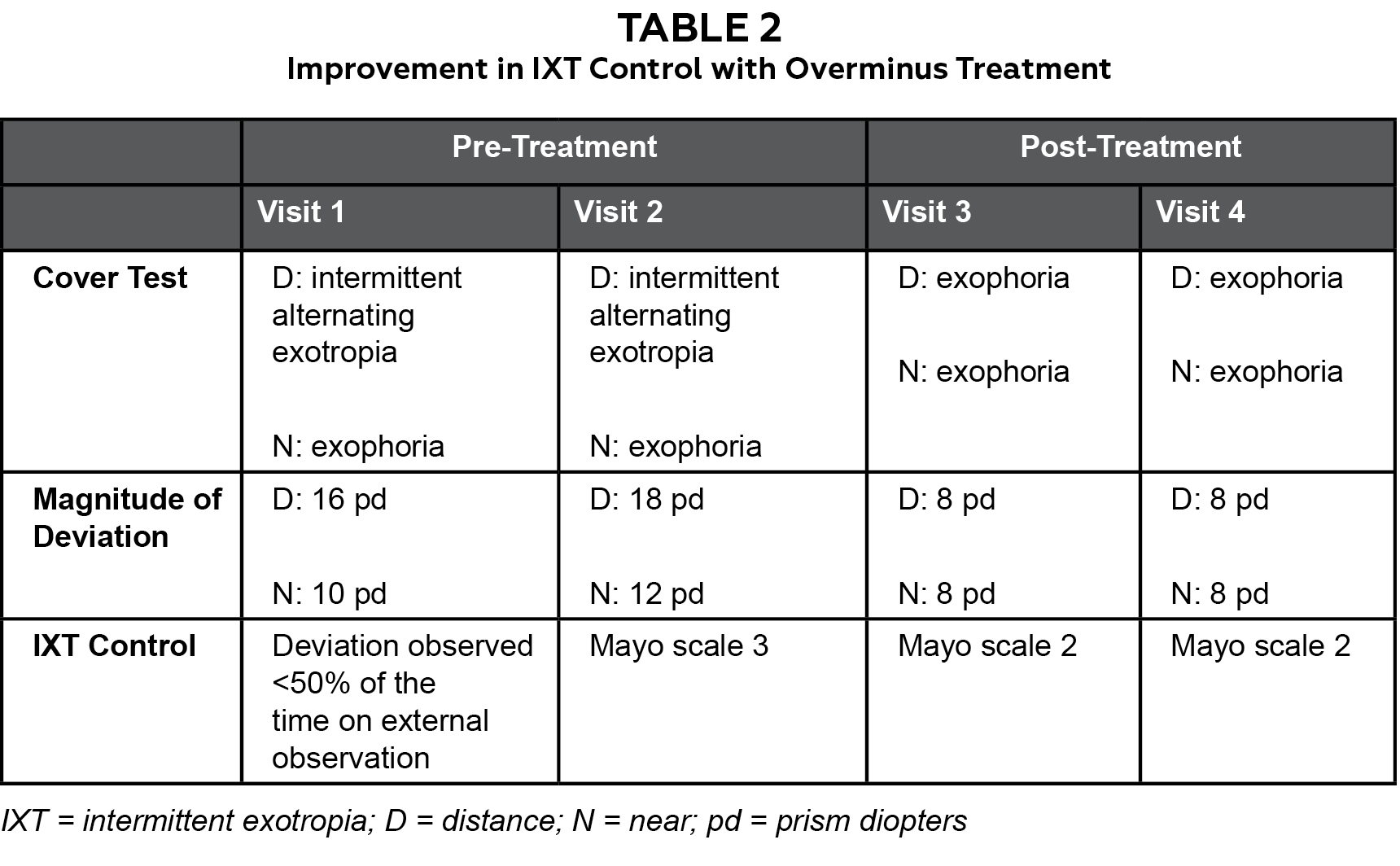



Management Of Intermittent Exotropia Of The Divergence Excess Type A Teaching Case Report The Journal Of Optometric Education




Conservative Management Of Intermittent Exotropia To Defer Or Avoid Surgery Journal Of American Association For Pediatric Ophthalmology And Strabismus Jaapos



3
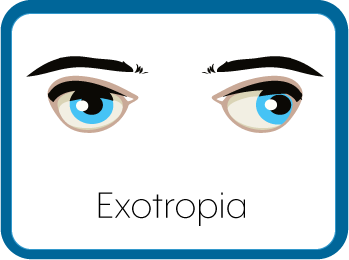



Exotropia
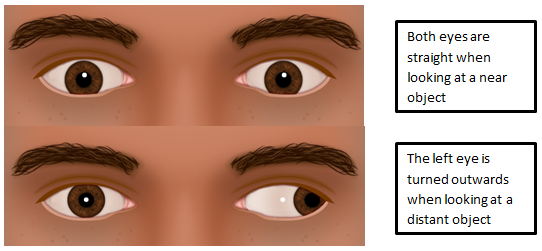



Intermittent Distance Exotropia Hull University Teaching Hospitals Nhs Trust
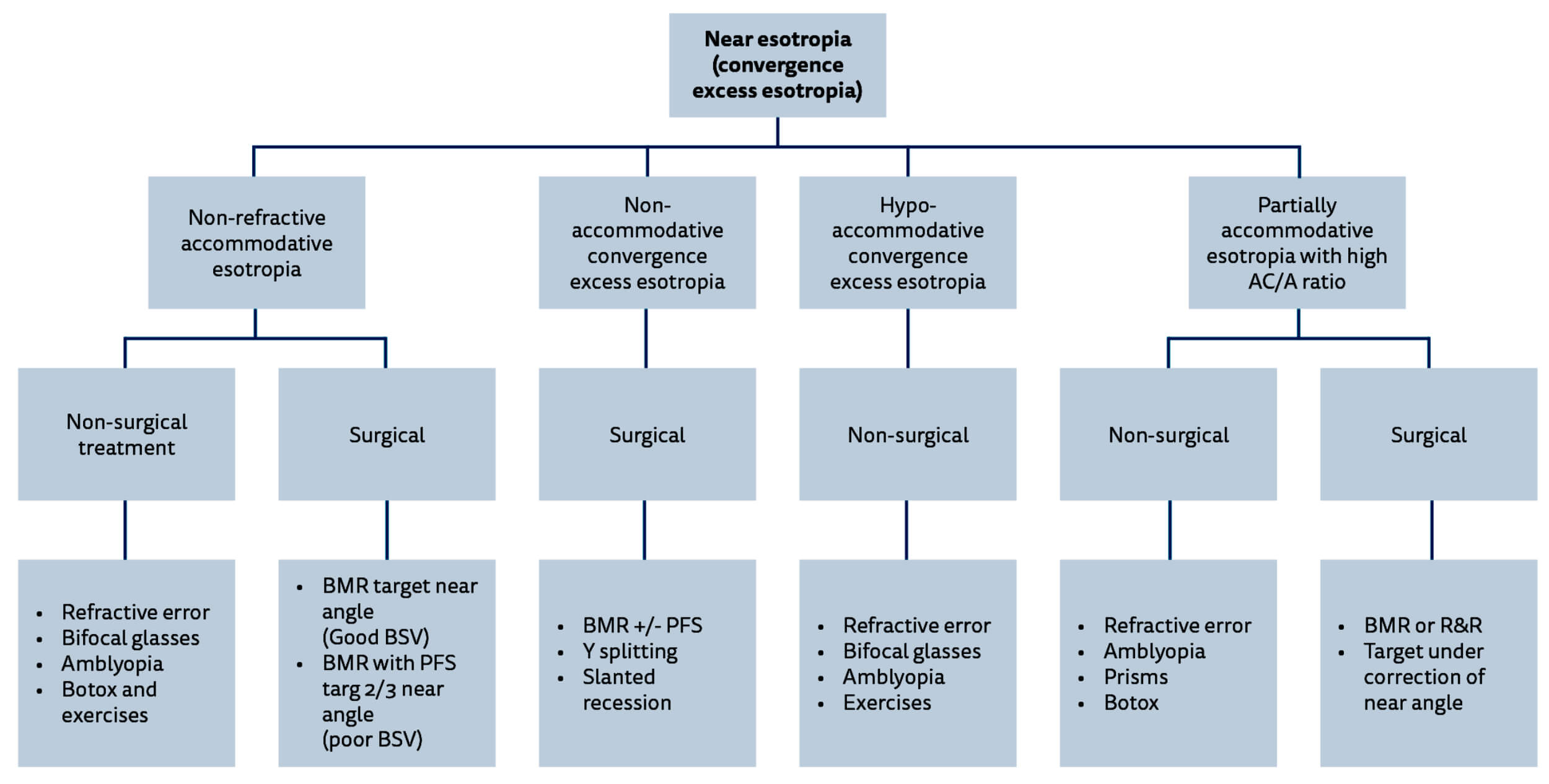



Management Of Squint With Near Distance Angle Disparity Eye News




Exotropia Central Eye Care



Ophthalmology Exotropia Dr Maria Elisa Scarale




Exotropia Ento Key
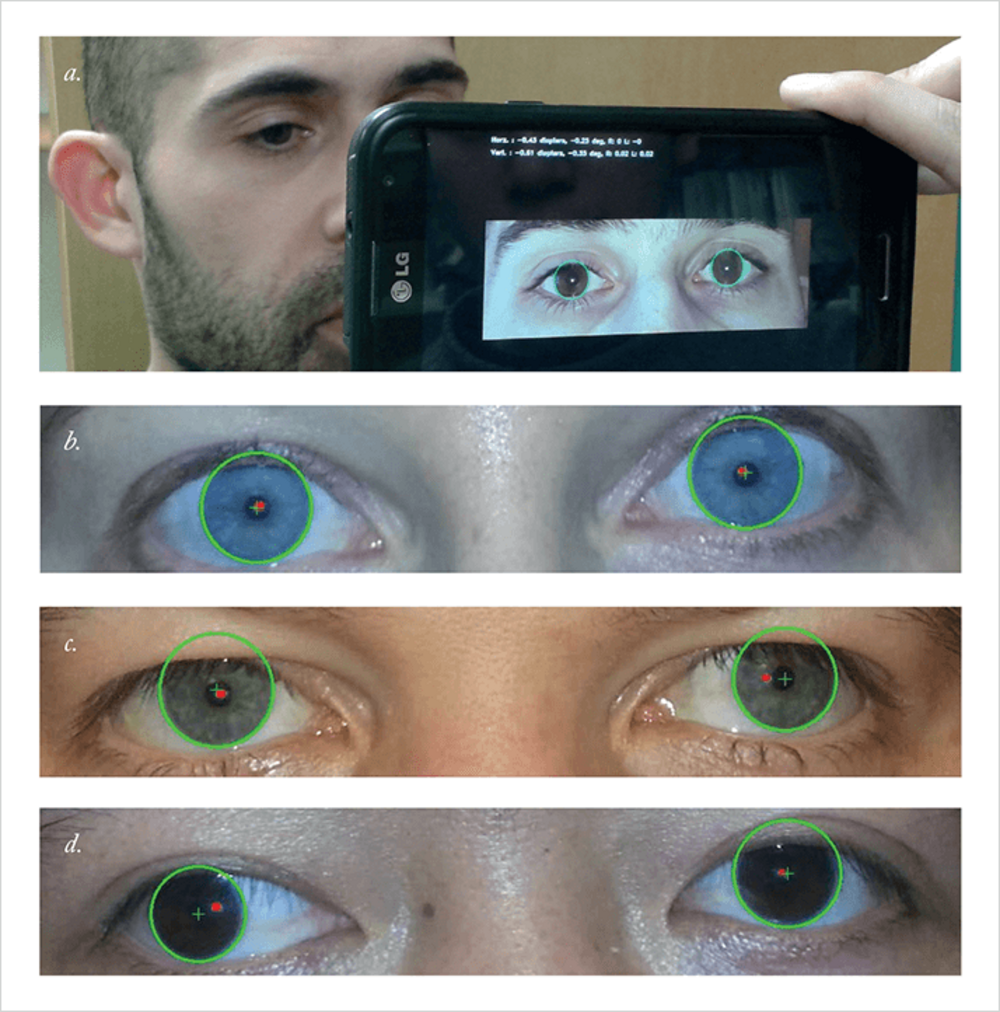



Strabismus Screening Now There S An App For That




How Is Intermittent Exotropia Treated




Exophoria




Outcomes Of Undercorrection In Surgical Management And Binocular Visio Opth



Intermittent Exotropia Wright Center
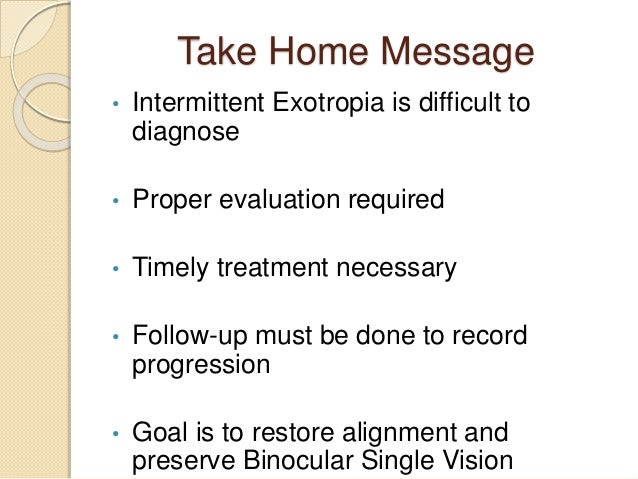



Intermittent Xt




Exotropia American Association For Pediatric Ophthalmology And Strabismus




Exotropia Central Eye Care




Prognostic Factors For Recurrence With Unilateral Recess Resect Procedure In Patients With Intermittent Exotropia Eye
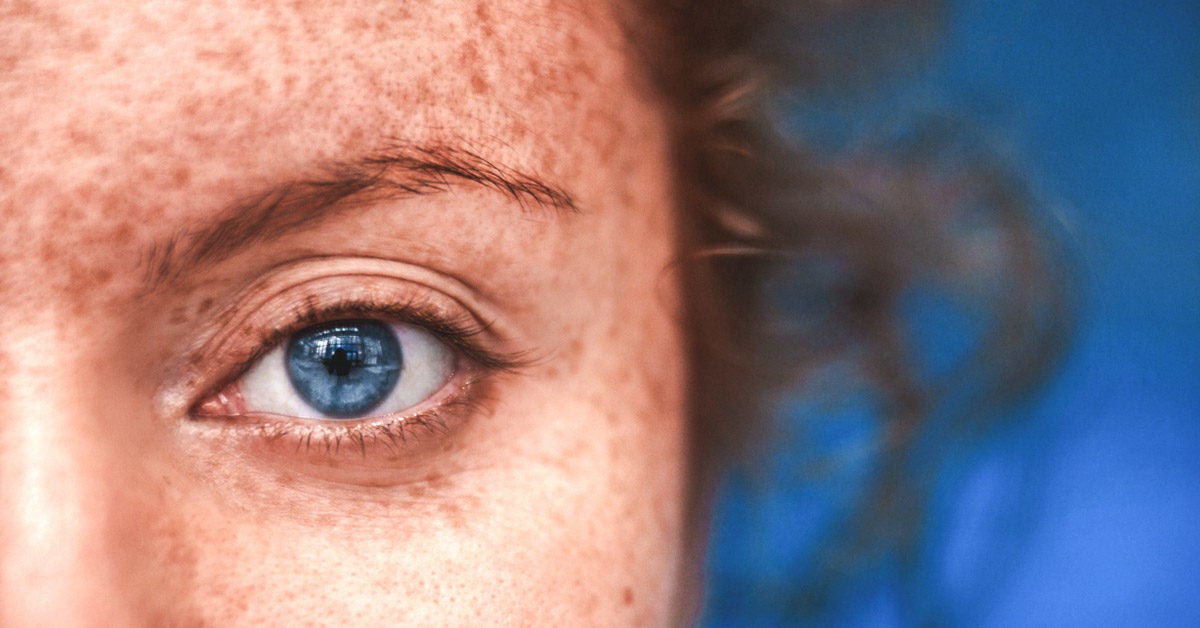



Exophoria Definition Treatment And How It Compares To Exotropia




Intermittent Exotropia Ento Key




Your Stories Intermittent Exotropia And Conflicting Treatment Options For Little Eyes
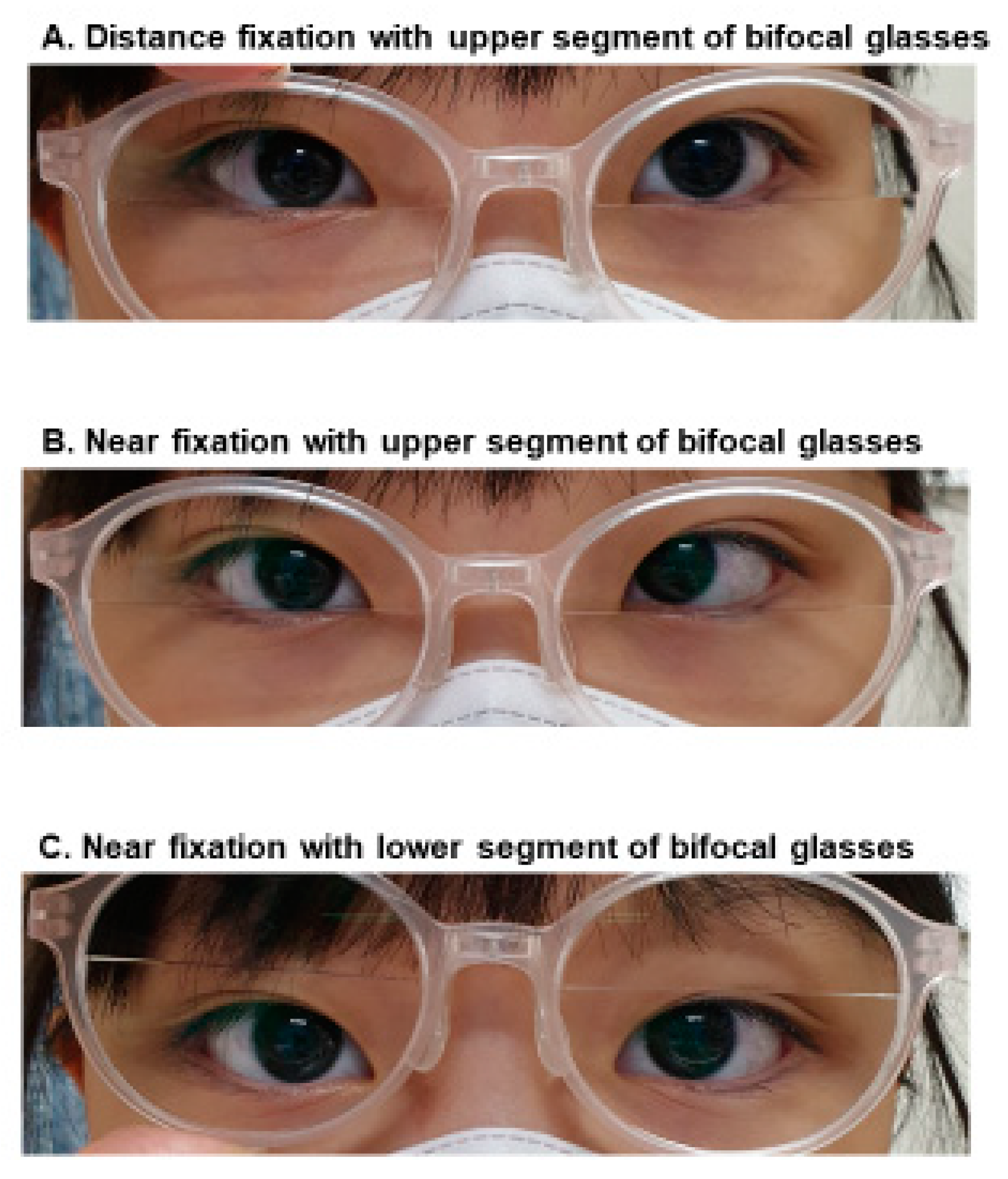



Jcm Free Full Text High Accommodative Convergence Accommodation Ratio Consecutive Esotropia Following Surgery For Intermittent Exotropia Clinical Feature Diagnosis And Treatment Html



2




Do You See A Pattern




Squint Treatment Without Surgery In India Sanjeevan




Squint Or Strabismus Causes Exercises Treatment And Symptoms




Surgical Treatment Of Intermittent Exotropia Journal Of Pediatric Ophthalmology Strabismus



Vision Therapy For Intermittent Exotropia A Case Series Journal Of Optometry
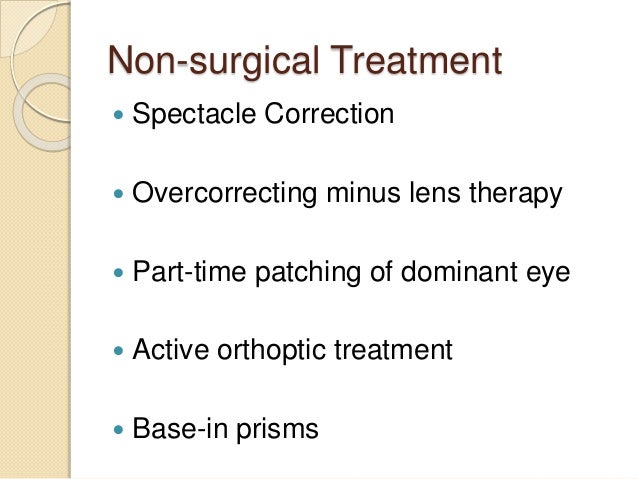



Intermittent Exotropia



2
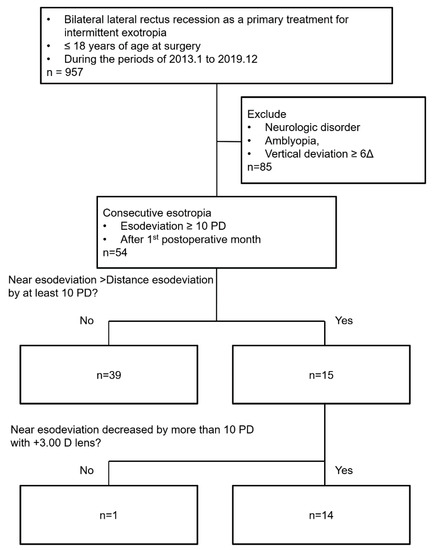



Jcm Free Full Text High Accommodative Convergence Accommodation Ratio Consecutive Esotropia Following Surgery For Intermittent Exotropia Clinical Feature Diagnosis And Treatment Html




Syah S Optometry Blog Exotropia Classification
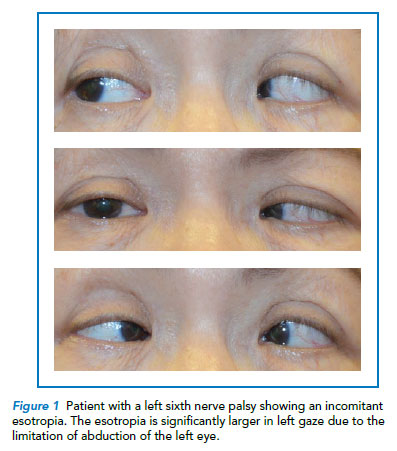



Common Strabismus In Children A Brief Overview Singhealth



Intermittent Exotropia Wright Center




Exotropia In Children And Adults




Pdf Optometric Vision Therapy In The Management Of Consecutive Intermittent Exotropia With Dissociated Vertical Deviation And Anomalous Correspondence A Case Study Semantic Scholar




Exotropia Types Symptoms Diagnosis Treatment Prevention




Pdf Distance Near Differences In Intermittent Exotropia Semantic Scholar




Exodeviations An Exodeviation Is A Divergent Strabismus That Can Be Latent Or Manifest Ppt Video Online Download



Management Of Strabismus In Myopes Kekunnaya R Chandrasekharan A Sachdeva V Middle East Afr J Ophthalmol




Exotropia Symptoms Management And More




Surgical Success Rate For Intermittent Exotropia The Visionhelp Blog




A Nail In The Coffin Of Over Minus Lens Treatment For Intermittent Exotropia The Visionhelp Blog




12 Intermittent Exotropia Strabismus Ideas Eye Exercises Vision Therapy Eyes




Management Of Squint With Near Distance Angle Disparity Eye News



1




Evaluation Of The Therapeutic Effect Of Patching In Intermittent Exotropia
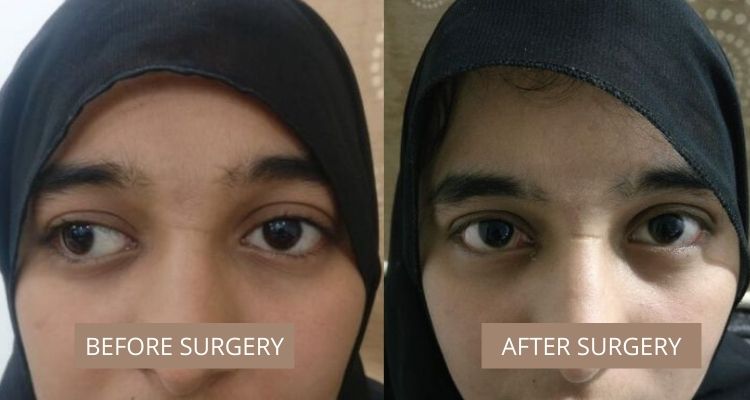



Exotropia Best Squint Treatment In Mumbai Eye Solutions




Intermittent Exotropia
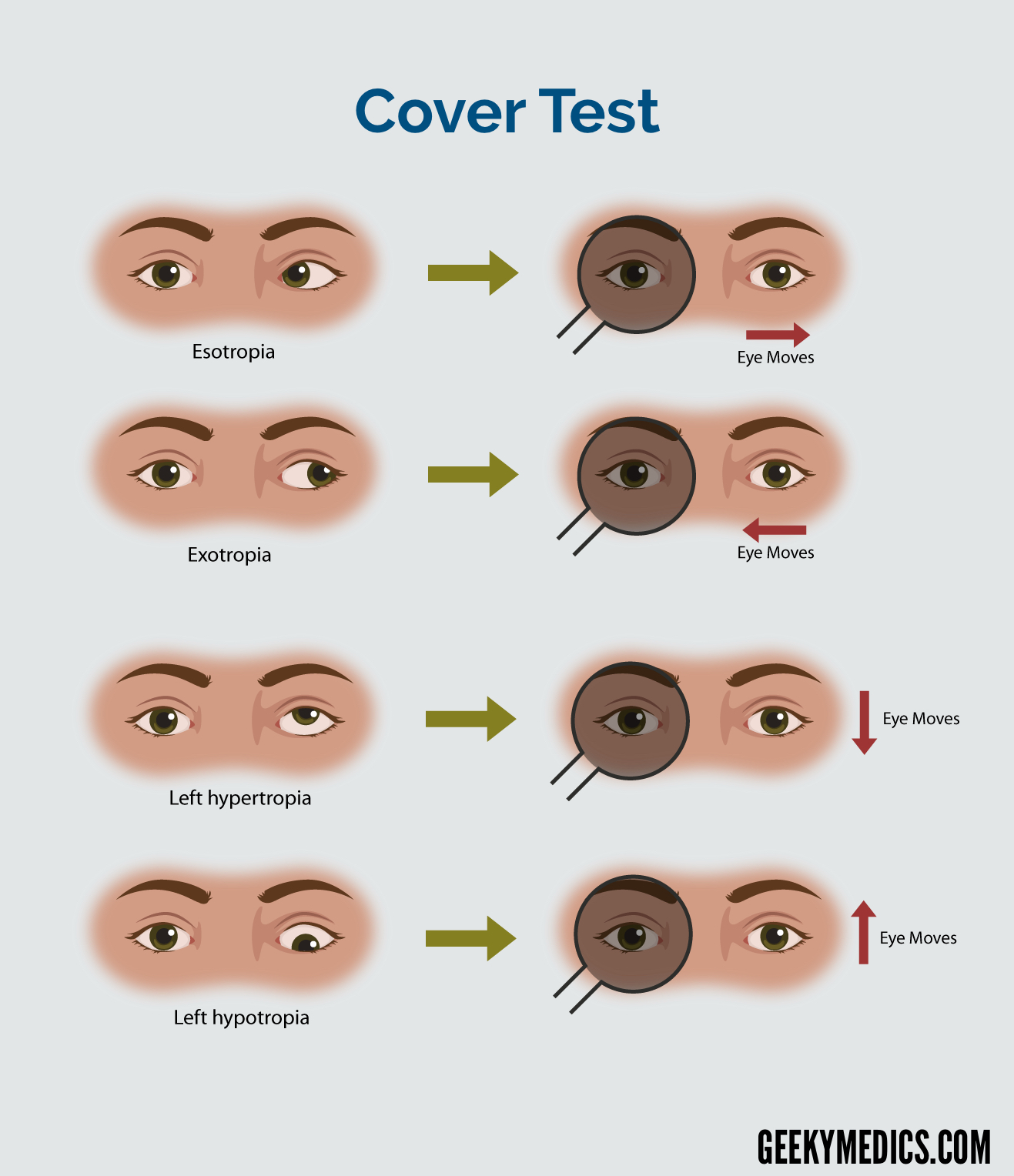



Strabismus Exotropia Esotropia Cover Test Geeky Medics




Exodeviations An Exodeviation Is A Divergent Strabismus That




Divergence Insufficiency Excess Vision Therapy Paducah Kentucky
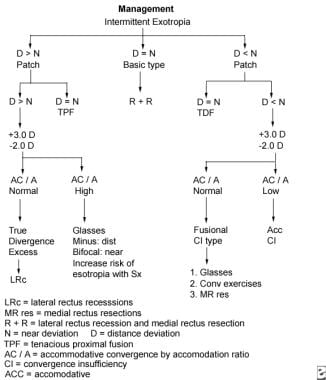



Acquired Exotropia Treatment Management Medical Care Surgical Care Consultations
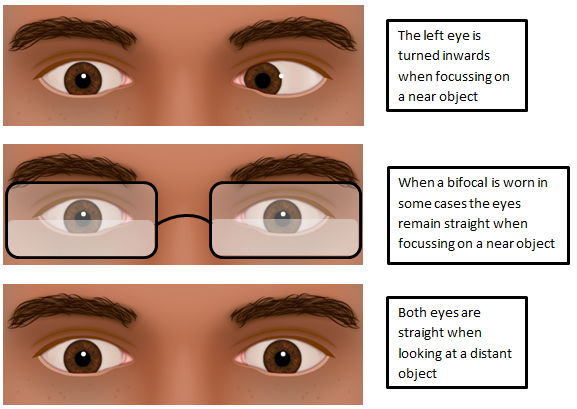



Convergence Excess Type Intermittent Esotropia Hull University Teaching Hospitals Nhs Trust




Exotropia Pediatric Ophthalmic Consultants



The Ongoing Challenge Of Intermittent Exotropia American Academy Of Ophthalmology
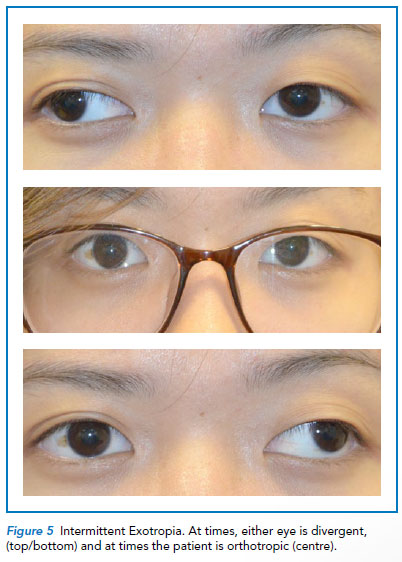



Common Strabismus In Children Singhealth




Vision Therapy For Intermittent Exotropia A Case Series Journal Of Optometry




Surgical Outcome Of Intermittent Exotropia Semantic Scholar




Non Surgical Management Options Of Intermittent Exotropia A Literature Review Heydarian S Hashemi H Jafarzadehpour E Ostadi A Yekta A Aghamirsalim M Dadbin N Ostadimoghaddam H Khoshhal F Khabazkhoob M J Curr




Pdf Vision Therapy For Intermittent Exotropia A Case Series




Exotropia Eyewiki




What Is Exotropia Causes Symptoms Treatment Prognosis Complications



2




Strabismus Natural Ways To Help Resolve Crossed Eyes Dr Axe
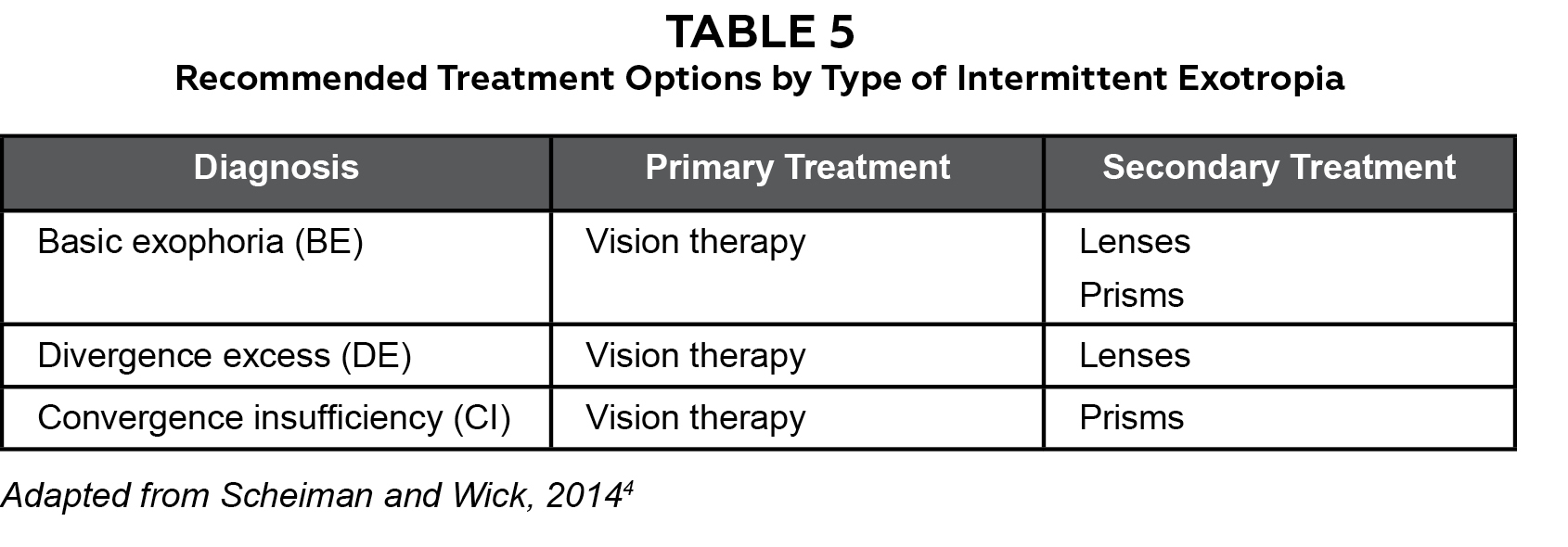



Management Of Intermittent Exotropia Of The Divergence Excess Type A Teaching Case Report The Journal Of Optometric Education



1




Role Of Overminus Therapy In Intermittent Exotropia Mangad Se Mohan L Vijayalakshmi M S Krishnan P Babu Sp Kerala J Ophthalmol



Surgery For Intermittent Exotropia



1




Adult Intermittent Exotropia Pre And Postoperative Examination Notes Download Scientific Diagram




Overminus May Temporarily Improve Exotropia But Intensify Myopic Shift Ophthalmology Advisor



Strabismus Squint A Common Eye Condition And Suggested Treatment




Management Of Intermittent Exotropia Of The Divergence Excess Type A Teaching Case Report The Journal Of Optometric Education




Pdf Intermittent Exotropia Surgical Treatment Strategies
コメント
コメントを投稿